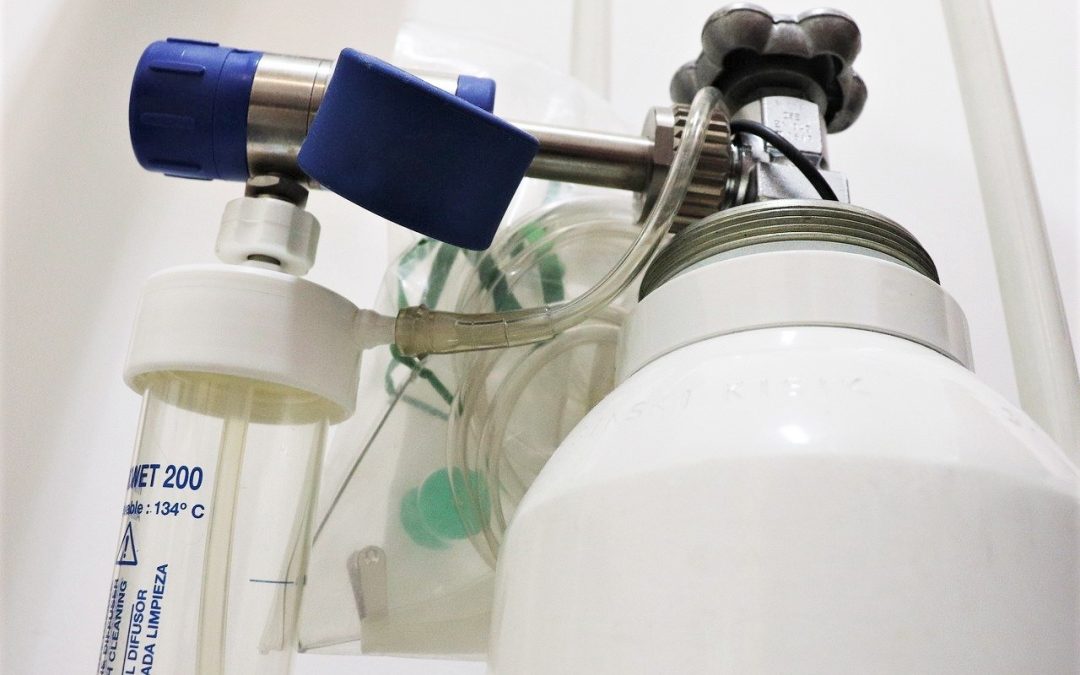Liquid oxygen systems have numerous applications in the medical and pharmaceutical industry. Understanding their different characteristics allows us to choose the most suitable option for each of their uses.
What is liquid oxygen and what is a liquid oxygen system?
Liquid oxygen is a liquefied gas that has been transformed by this process into a cryogenic liquid. It is characterised by a boiling point of – 297°F (-183°C), which is much lower than other elements of the same type. For this reason, it requires special equipment for handling and storage.
There are various liquid oxygen systems, but the most typical is the one with a cryogenic storage tank, one or more vaporisers and a pressure control system. When used for respiratory therapy, it has two essential components: a tank and a portable liquid oxygen unit that is filled within it and provides freedom of movement to the user.
Uses of liquid oxygen and health effects.
Medical liquid oxygen is a key part of many treatments, but we must also be aware that, if not handled correctly, it is not without potential dangers.For example, inhaling it at an atmosphere of 80% oxygen for 12 hours can cause respiratory tract irritation and other symptoms such as coughing, sore throat and chest pain. It is therefore important that the storage and use of LOX is in the hands of specialised professionals with the appropriate technical equipment.
Keep learning: Super-Fluid Helium: The importance of Liquid Helium and its applications
Liquid oxygen systems: containers.
LOX is stored, transported and handled in different types of containers, depending on the quantity to be worked with. These include dewars, cryogenic liquid cylinders and storage tanks. All are designed with your specifications and established codes of use in mind.
Cryogenic liquid cylinders
These cylinders are a vacuum-insulated pressure vessel with relief valves and rupture discs to protect against pressure build-up. An internal vaporiser allows liquid oxygen to be removed.
Cryogenic storage tanks
Liquid oxygen system storage tanks are always mounted in fixed locations and have several circuits to control filling, pressure build-up, pressure relief, product withdrawal and emptying.
Transfer lines
They are used to remove the product from liquid oxygen generators and their containers. One example is vacuum insulated lines.

Support and maintenance of liquid oxygen systems.
At Cryospain we specialise in the maintenance and repair of liquid oxygen systems. We carry out the inspection of Dewars to ensure that they comply with the established standards of use and safety, specifically by carrying out the following processes:
- Helium testing of the outer container by mass spectrometry (leak detection).
- Helium test in the inner container by mass spectrometry (leak detection)
- Heating in vacuum pipe collector (85-90°C for 48 hours).
- Pumping with primary pump + diffuser + siphon up to 10^-5mbar level.
- Stabilisation and measurement of final vacuum.
- Tightness test of the valve system with dry N2 gas.
- Valve system leak check with soapy water.
- Inspection / replacement of pressure gauge.
- Inspection (removal) / replacement of safety relief valves.
- Final leak test of equipment with dry N2 gas.
Our facilities also boast a workshop dedicated exclusively to the inspection, maintenance and vacuum recreation of cryogenic tanks, which includes actions such as leak detection, repair and manufacture of control panels, inspection and repair of cryogenic valves.
Finally, it is also worth noting that at Cryospain we offer additional services for liquid oxygen systems, such as filling stations for high-pressure gas cylinders and corrective maintenance to replace damaged or worn elements.









